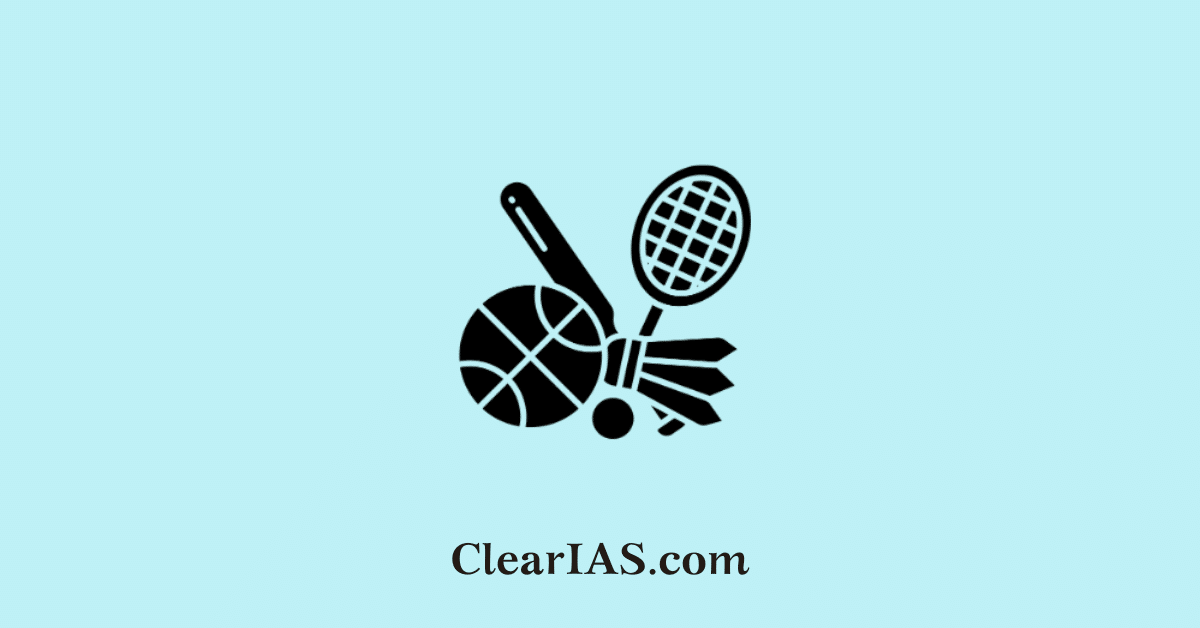
The National Sports Governance Bill 2025 is aimed at reforming India’s Sports Administration. One of the key facets of the Bill is the Safe Sport Policy, which addresses mandatory adoption of athlete protection frameworks, grievance redressal mechanisms, and safeguards against harassment, especially for women, divyang and minors. Read here to learn more about the bill.
The National Sports Governance Bill, 2025, was passed by the parliament in August 2025, marking a milestone in India’s efforts to reform and modernise the governance of sports.
The Bill seeks to overhaul the structure, recognition, and regulation of national sports bodies, while introducing institutional checks and balances through a National Sports Board (NSB) and a National Sports Tribunal.
It attempts to align India’s sports ecosystem with international norms while ensuring transparency, accountability, and athlete welfare.
Background: Why a New Law?
For decades, Indian sports governance has been plagued by issues such as:
- Opaque functioning of federations dominated by entrenched officials.
- Conflict of interest and lack of accountability in sports administration.
- Inadequate athlete representation in decision-making bodies.
- Frequent international suspensions, as seen with wrestling and football federations.
- Judicial interventions, where the Supreme Court and High Courts often had to step in to oversee elections and enforce term limits.
The Bill aims to provide a comprehensive legal framework to address these concerns, replacing the ad hoc mix of government guidelines, court judgments, and international pressure that has governed Indian sports bodies until now.
National Sports Governance Bill 2025
Recognition and Structure of National Sports Governing Bodies
The Bill establishes three categories of apex bodies:
- National Olympic Committee
- National Paralympic Committee
- National and Regional Sports Federations (for each designated sport).
These bodies must be affiliated with their respective international federations.
They are required to:
- Create committees for functioning (disciplinary, athletes, ethics).
- Adopt a code of ethics for athletes, coaches, members, and sponsors.
- Set up a grievance redressal mechanism.
International charters and statutes will primarily govern these bodies. If there is a conflict with the Bill, the central government may issue clarifications.
Administrative Structure of National Bodies
- General Body: Equal representation from affiliate members and ex officio members.
- Executive Committee: Up to 15 members, including:
- 2 outstanding sportspersons
- 4 women members
Eligibility Conditions:
- Age between 25 and 70 years.
- Compliance with international federation rules on age and term limits.
- Persons aged 70–75 may serve if permitted under international rules.
Office Bearers: President, Secretary General, Treasurer.
- Must be outstanding sportspersons or members of the executive committee with two full terms.
- No individual may serve more than 3 consecutive terms (in the same or combined roles).
National Sports Board (NSB)
The Bill empowers the central government to set up the NSB as the apex regulatory authority.
Functions of NSB:
- Grant recognition to national sports bodies and register affiliates.
- Ensure only recognised bodies receive government funds.
- Suspend/cancel recognition if rules are violated.
- Issue guidelines on the code of ethics and compliance with international rules.
- Inquire into misuse of funds, athlete welfare issues, or maladministration.
- Create ad-hoc administrative bodies if a federation loses international recognition.
Composition:
- Chairperson + experts in sports governance, law, public administration, or sports management.
- Members appointed by the central government, based on recommendations of a search-cum-selection committee.
National Sports Tribunal
To resolve sports-related disputes, the Bill establishes a National Sports Tribunal.
Composition:
- Chairperson: Sitting/former Supreme Court Judge or Chief Justice of a High Court.
- Two members: Eminent persons with expertise in sports, law, or administration.
Appointment: By a search-cum-selection committee comprising:
- Chief Justice of India (CJI) or a nominated SC judge.
- Law Secretary.
- Sports Secretary.
Jurisdiction:
- Will NOT cover:
- Disputes involving international sports bodies.
- Internal disputes of national federations.
Appeals: To the Supreme Court of India, unless international rules require appeal to the Court of Arbitration for Sport (CAS), Switzerland.
Oversight of Elections
- A national panel of electoral officers will oversee elections of national sports bodies.
- Every national sports body must also constitute its electoral panel for affiliate-level elections.
This provision seeks to curb manipulation and ensure transparent elections.
Powers of the Central Government
- The Centre may exempt a national sports body from any or all provisions of the Bill if required in the public interest to promote that sport.
- This ensures flexibility, especially in cases where strict adherence to domestic law may conflict with international federation requirements.
Expected Impact
- Transparency and Accountability: By mandating codes of ethics, grievance redressal, and oversight mechanisms.
- Athlete-Centric Governance: Inclusion of sportspersons in executive bodies ensures representation of athlete interests.
- Reduced Litigation: With a specialised tribunal, courts will no longer be overburdened with sports disputes.
- Alignment with Global Norms: Provisions ensure compliance with international federation rules.
- Curbing Political Interference: Age and tenure limits restrict entrenched sports administrators.
Sports governance in India
Aspect |
Old System (Pre-2025) |
National Sports Governance Bill, 2025 |
Legal Framework |
No comprehensive law; governed by government guidelines, court rulings, and international body statutes. |
Provides a clear statutory framework under Indian law while respecting international charters. |
Recognition of Bodies |
Recognition given by the Ministry of Youth Affairs & Sports (MoYAS); ad hoc suspensions are common. |
National Sports Board (NSB) grants recognition and registers affiliates; only recognised bodies can receive govt. funds. |
Autonomy of Federations |
Federations often claimed autonomy but faced allegations of political capture, lack of accountability. |
Federations remain autonomous but must comply with the code of ethics, grievance redressal, and NSB oversight. |
Representation of Sportspersons |
Limited or symbolic representation in federations; dominated by administrators. |
Mandatory inclusion of at least 2 outstanding sportspersons and 4 women in executive committees. |
Age & Tenure Limits |
Weak enforcement; many officials served for decades. |
25–70 years age range (extendable to 75 if allowed by international rules). Max 3 consecutive terms in office. |
Office Bearers (President/Secretary/Treasurer) |
Often, politically influential persons, not always sportspersons. |
Must be outstanding sportspersons or experienced administrators (two terms in EC). |
Elections Oversight |
Frequent disputes, opaque elections often required court monitoring. |
National panel of electoral officers to oversee elections + internal electoral panels at the affiliate level. |
Dispute Resolution |
Cases went to the High Courts/Supreme Court, causing delays. |
National Sports Tribunal (SC judge + experts) for speedy dispute resolution; appeals to SC or CAS (Switzerland). |
Funding & Financial Oversight |
Govt. funds are often disbursed without strict conditions, allegations of misuse. |
NSB is empowered to suspend or cancel funding/recognition for mismanagement or misuse of funds. |
Government Role |
Ministry acted as regulator, funder, and monitor; often accused of overreach or laxity. |
Clear role for NSB + central govt. powers to exempt provisions in the public interest (flexibility). |
Athlete Welfare |
Often neglected, no strong grievance mechanism. |
Bodies must set up grievance redressal systems, and the NSB is empowered to inquire into athlete welfare issues. |
Challenges Ahead
- Implementation: Powerful entrenched lobbies within sports federations may resist reforms.
- Centre-State Balance: State-level federations may clash with central oversight.
- Risk of Over-Centralisation: The Government’s power to exempt or override provisions may undermine autonomy.
- Conflict with International Bodies: Some international federations oppose government interference in sports governance.
- Judicial Workload Shift: Though tribunals reduce litigation, Supreme Court appeals may still prolong cases.
Conclusion
The National Sports Governance Bill 2025 is a bold attempt to modernise India’s sports governance by combining international alignment, accountability, and athlete representation.
If implemented effectively, it could transform India’s sports administration, reduce corruption, and enhance athlete welfare, crucial steps in India’s aspiration to become a global sporting powerhouse.
Related articles:







Leave a Reply